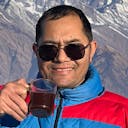Why the choice of trekking in Mustang is a perfect decision?
If Mustang were to be described, “Mystical” would be the perfect word that encapsulates trekking in Mustang wholly. This lesser-known part of the country is an ideal destination for summer trekking. With traditions not found anywhere else on Earth- the Mustang region is one of the last vestiges of authentic Tibetan culture in its most refined form. This once flourishing hidden kingdom opened its gates to travelers reasonably recently in 1991, allowing trekkers and visitors to explore this beautiful and sensitive territory.
The Upper Mustang Trek is a less-trodden path, and this is one of the things that make for curious exploration. Aptly snuggled on the borders of Tibet, Mustang is a rain-shadow zone of the Annapurna and Dhaulagiri Mountain ranges. Because of this character of Mustang’s topography, trekking in Mustang in the summer is an ideal prospect. Trekking in Mustang offers cultural observations on arid terrains that are adorned with many historically significant sights. The wind-eroded hillsides of Mustang have a similarity to that of the Grand Canyon. Yet, the idiosyncratic landscape of the region is shrouded in a religious and traditional ambiance. Surrounded by over 35 mountain ranges with elevations ranging from 2815 to 3780 meters above sea level, trekking in Mustang provides a medley of natural and cultural aspects. A thriving kingdom several hundred years ago, Mustang was a terminus of Buddhist teachings and art.
This kingdom was an ancient junction for salt trade between Tibet and cities of the Indian subcontinent. Mustang was once a restricted zone and today allows about 200 trekkers through its gates annually. With the declaration of Nepal as a Republic State in 2007, Mustang is still considered one of the last forbidden kingdoms by the local people. Mustang’s landscape is ornamented handsomely with ground caves, opulent monasteries, various chortens, and a desolate terrain that presents a different trekking experience than other trekking destinations of Nepal.
Facts about Mustang
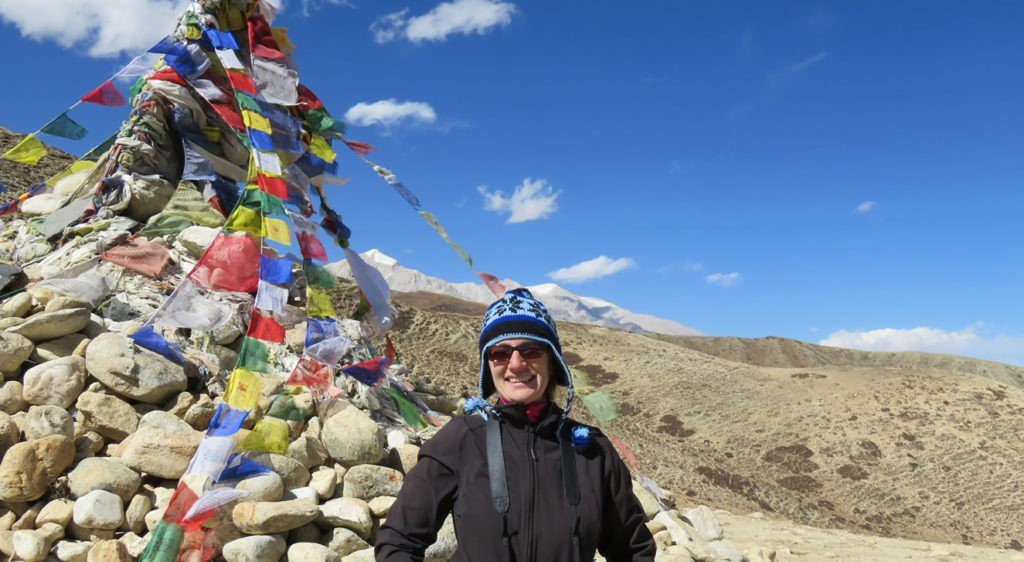
With Jomsom as its headquarters, Mustang is one of the seventy-five districts of Nepal. It is called “the Kingdom of Lo” as well. Covering an area of 3,573 square kilometers, Mustang’s population amounts to be 13,452 (2011). Straddling the Himalayas, Mustang extends northwards into the Tibetan plateau. The district is divided geographically into two parts, the Upper Mustang, and the Lower Mustang. Upper Mustang is the former Lo Kingdom, and it comprises the northern two-thirds of the district. The ivory peaks of Dhaulagiri and Nilgiri mountain ranges form a Himalayan backdrop to Jomsom’s landscape. Regular flights take place in the Jomsom Airport, and this district headquarters is mainly occupied by Thakali, Gurung, and Tibetan Buddhist people. The district of Mustang is blessed with the flow of the Kali Gandaki River, which forms one of the deepest ravines in the world.
History of the Mustang
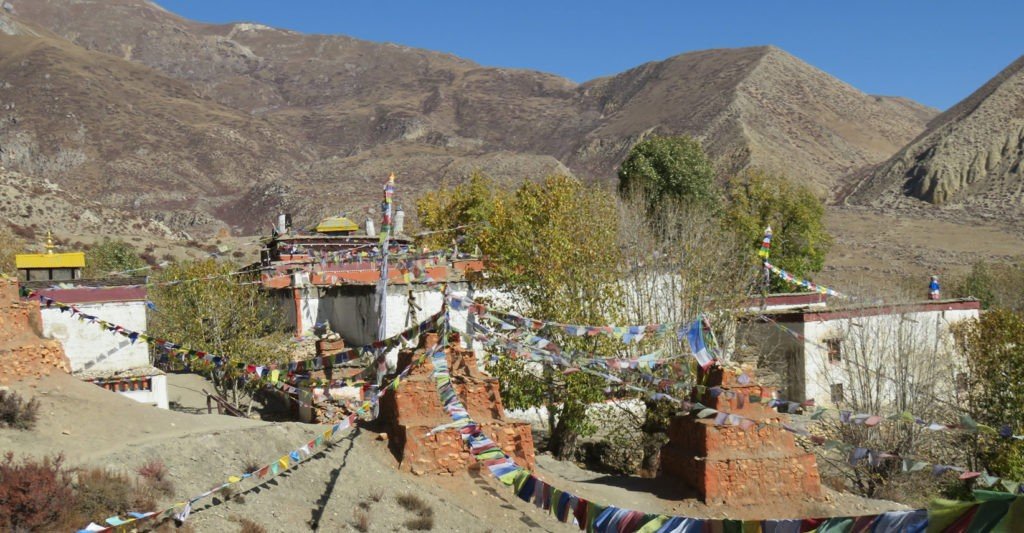
The caves in Mustang bear testimony of prehistoric settlers. Tibetan chronicles have mentioned Lo Manthang in Upper Mustang since the seventh century. Its history as an independent kingdom began after 1380, when Ame Pal, a warrior and a devout Buddhist from western Tibet, built Ketcher Dzong's fortress. With his sons, he defeated the local warlords and constructed a walled capital called Lo Manthang.
The present king Jigmi Plbar Bista is believed to be his twenty-first descendant in the direct line. Because of the passes on Mustang’s northern border, which are easy to cross, the tiny kingdom strategically positioned the trade route between Tibet and India. The lamas of Lo Manthang went to study in Tibet, and religious teachers and pilgrims often crossed the land. Economy and culture thrived in Mustang, and Lo Manthang was the epicenter of the district. The custom of closing the gate of Lo-Manthang every night resulted from attacks from Tibetan bandits in those ancient times and was observed until a few years ago.
At the end of the 1700s, Prithivi Narayan Shah, the Gorkha King who founded Nepal, annexed Mustang during his conquest. The introduction of a constitutional monarchy in Nepal in 1951 resulted in Mustang becoming a district. The Nepal government then declared Mustang District a restricted area. When a parliamentary democracy took place in Nepal in the 1990’s revolution, the new government decided to open Mustang partially for foreigners. The first trekking group entered Upper Mustang in 1992. In the same year, the Annapurna Conservation Area was extended to include Upper Mustang as well.
Topography and Climate
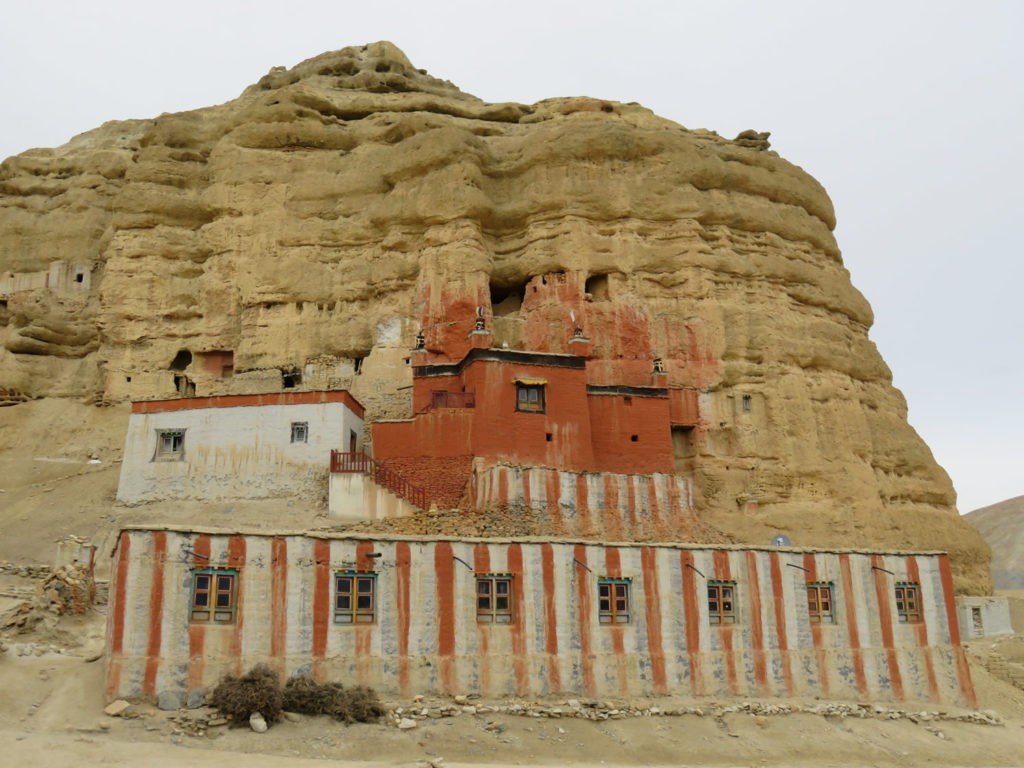
Mustang is located 2750 meters above sea level on close peripheries of the Kali Gandaki River north of Kagbeni. Much of Mustang’s area is a high-altitude steppe. The irrigated alluvial parts of the valley are used intensely for cultivation, while the lower slopes and alpine meadows are used for grazing and collecting herbs and other natural resources. Vegetation coverage of the land is sparse, while the snow and strong winds in the region tend to accelerate the erosion process.
Mustang is cold and arid with a Trans-Himalayan climate with an average temperature ranging between 4°C below zero to 14°C. Upper Mustang lies in the rain-shadow of the Annapurna and Dhaulagiri Himalayan ranges. Therefore, the climate is insular with light rain and strong winters. Mustang has relatively mild weather conditions from April to October, with all agricultural activities taking place. That is why the months of May to September are ideal times for trekking in Mustang.
Religion
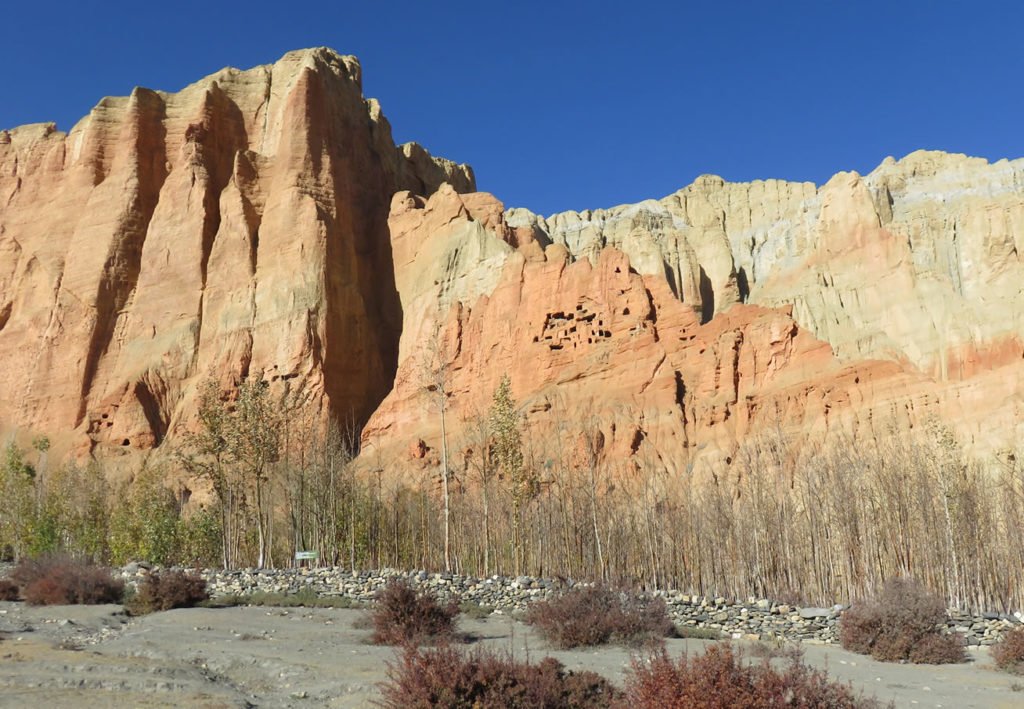
The population of the Upper Mustang is almost exclusively comprised of people of Tibetan ethnicity. The social and cultural history of Lo is strongly tied with Tibet. Tibetan Buddhism is the predominant religion in the region. Upper Mustang has succeeded in preserving many fine art and cultural artifacts of Tibetan Buddhism in wall paintings, Tibetan Thanka, idols, and statues. Through the centuries, Lo-Manthang has evolved as an essential repository of Tibetan Buddhism, where it flourished and was devoutly nurtured.
The images, frescoes, sculptures, ancient religious manuscripts, and artifacts housed in the Tibetan monasteries and other places of worship in the region reflect a culturally rich and glorious past. The Lo-Gekar Monastery, Tsarang Monastery, Namgyal Monastery, Ghami Monastery, Nyiphuk Monastery, Ghiling Monastery, Gonpa-Kang, Choser Cave, Luri Cave, and the unique Chorten (stupa) of Tangya are some of the monasteries that the Mustang region is adorned with. The trekking trails in Mustang present opportunities to visit these sites. Lo Manthang also exemplifies the co-existence and flourishing of the different sects of Tibetan Buddhism.
Bön was the predominant belief that the people followed in Lo before the eighth century. Lo was not just a refuge of imported Tibetan beliefs, but it also produced many prominent Lamas and scholars. Several well-known scholars had their roots in Lo Manthang.
Highlights of Mustang Region

Mustang has many culturally and historically important sites and destinations that adorn the trekking trails, apart from arid landscapes, unique terrains, and majestic views of mountains. The century-old perseverance of the Tibetan Buddhist culture of Mustang also presents quite an exciting prospect for observation while trekking in Mustang.
Muktinath Temple: The holy temple of Muktinath holds great significance to all spiritual people in the south-Asian sub-continent. It is an important pilgrimage site for both Hindu and Buddhist people. The holy shrine at Muktinath is in a grove of trees and includes a Buddhist Gompa and the pagoda-style architecture of the Vishnu Temple. Located on the base of the Thorung Peak, it lies 20 kilometers northeast of Jomsom at an altitude of about 3800 meters above sea level. It is a gateway to Mustang from Manang while trekking the famous Annapurna Circuit Trek route.
Many Saligrams (Ammonites) can be found here. Saligrams are black rocks that are considered holy and sacred by the Hindus. The temple of Muktinath sees a surge of pilgrims and visitors, especially in Rishitarpani, Ram Nawami, and Bijaya Dashami, where thousands of pilgrims gather to celebrate the festivals.
MuktiDhara: MuktiDhara translates to “Wall of Water-Taps” in Nepali. MuktiDhara is a wall around the temple of Muktinath that has 108 water-spouts jostling water. The faucets in the wall are styled in the bull’s head and pour sacred water from their orifices. The water from the Gandaki River continuously flows through the mouths of the bulls. Pilgrims who visit the temple take holy baths in each of these spouts. On the occasion of Janai Purnima, the Buddhist festival of Yartang Mela is celebrated here.
Jwala Mai Temple: A short distance from the Muktinath temple lies the sacred temple of the Goddess Jwala Mai. It is a Tibetan-style gompa where small natural gas jets erupting from the ground produce a continuously burning flame. The Jwala Mai Temple also has a hot spring. The temple has three eternal burning flames named “the holy flame from the rock,” “the holy flame from the water,” and “the holy flame from the soil.” The word “Jwala Mai” literally translates to “Goddess of Fire”.
The Buddhists believe that Padmasambhava, the great master who introduced Tantric Vajranarayana Buddhism in Tibet, meditated at this place. Some of the priests and pilgrims will also show footprints embedded on a fossilized rock, which they say are those of the great master. The Buddhists call the temple “Dhola Mebar Gomba”. Sights of Tibetan women dressed with opulent turquoise headdresses engaged in devotion at the shrine can be seen here and are pretty fascinating to look at.
Mharme Lha Khang Gompa: Located to the north of the Muktinath Temple, Mharme Lha Khang Gompa is a monastery dedicated to Guru Padmasambhava. “Mharme Lha Khang” translates to “thousand holy lamps”. A massive statue of the great Guru is placed in the center of the Gompa’s alter with Bön deities on either side of it. The Hindus also called the “Narsingha Gompa” because of the Gompa statue of a lion-headed deity called Singha Doma. Initially, this Gompa was a big hostel for monks.
The Swaminarayan Temple: This temple is dedicated to Lord Shri Swaminarayan, a divine Yogi. At the end of the 18th century, Shri Swaminarayan practiced severe penance in Muktinath for two and a half months and attained the highest degree of proficiency. In 2003, his followers founded a new wall around Muktinath and raised this small monument in his honor.
The Saligrams: Saligrams are fossils that are believed to be remnants from the Jurassic age of the pre-historic Mesozoic era. They are found in the Kali-Gandaki River and prove to be quite elusive. The local people also tend to sell Saligrams to visitors. Saligrams are considered sacred and are often used in prayer rituals. It is believed to be the symbol for Lord Vishnu.
Tiji Festival: Tiji is a three-day-long annual festival celebrated at Lo Manthang in front of the King’s palace and is one of the most well-known and revered festivals of Mustang. Tiji is a time for celebration and religious pilgrimages for the people of Lo. The festival initially began as a religious ceremony to ward off obstacles and sufferings that might befall the region. Later, it also came to symbolize the hope and strength of the people of Lo.
People in Mustang strongly believe that the Tiji festival brings hope and peace to the region and protects them from evil forces. The festival has dances and people wearing traditional colorful dresses depicting the victory of good over evil. The festival fills the air with chantings and steady beatings of the drums. In the days approaching the Tiji festival, the trekking trails from the surrounding villages to Lo Manthang are packed with local people and mule caravans, colorful dresses of the people, and a religious and exciting atmosphere.
Ghar Gumba: Ghar Gumba is a beautiful site. The monastery has a group of red-bricked chortens linked with prayer flags. Ghar Gumba has admirable views and is surrounded by local Himalayan flora. With a Mani stone wall construction, Ghar Gumba and its nearby settlement is a serene destination. The open vastness of the acreage surrounding the Gumba makes travelers feel like they have walked into a strange likelihood of isolation.
Ancient Mysterious Caves: Both manufactured and naturally carved caves are found in Mustang. It is estimated that there are nearly ten thousand caves throughout Mustang. Research of these mysterious caves began only recently in 2007. These caves have either been dug into the Cliffside or have been tunneled from above.
These thousand years old caves are shrouded in mystery regarding who built them and why they were built. Hidden within the Himalayas 155ft from the ground, these man-made caves are one of the world’s greatest archaeological mysteries. Thousands of these holes are carved into the fragile cliffs in a gorge so large, and it dwarfs the Grand Canyon.
Visiting Mustang in the Mummer
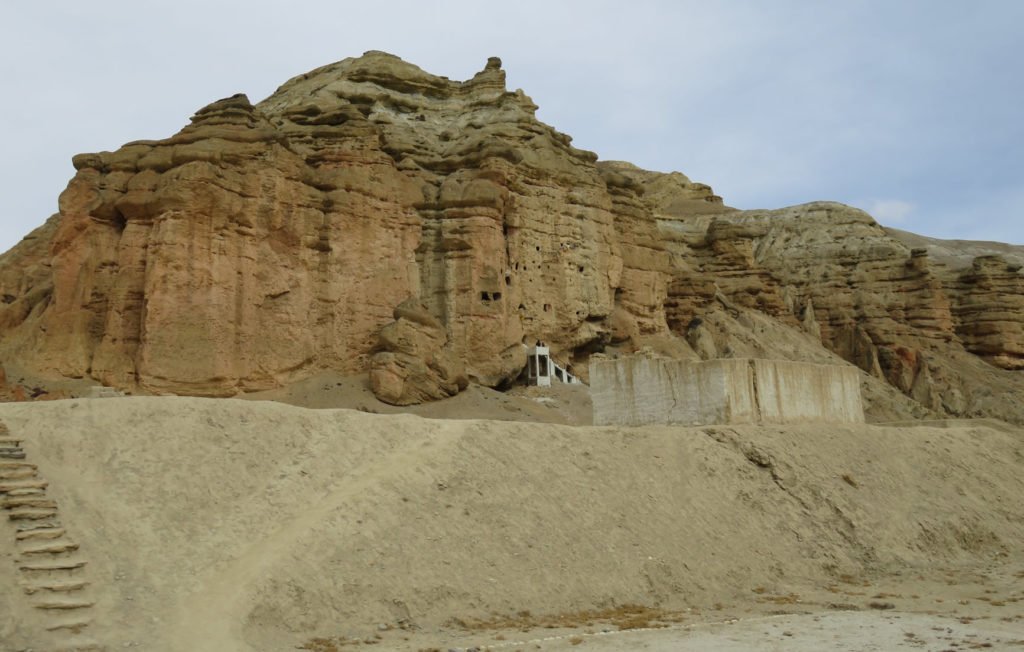
The months of May to September give way to the summer season. These months might not be ideal for trekking at other various destinations in Nepal because of the weather, but the case is exactly the opposite for Mustang. With favorable weather conditions, trekking in Mustang in the summer provides an utterly beautiful trekking experience. The atmosphere is clear and majestic views of the mountains can be seen along the trekking trails. In summer, the people of Mustang engage in agricultural activities, and the farmlands in Mustang grow into verdant foliages.
The landscape of Mustang during the summer resembles a wet painting- with arid and barren lands dotted with brown foliages and a Himalayan tapestry in the foreground under a blue sky. That is why trekking in Mustang in the summer is highly recommended.
Valuable Tips for visiting Mustang
- Usually, entry to Mustang is done from Kagbeni. That is why Kagbeni is also called the main gate to Upper Mustang. Kagbeni used to be a check post for traders in Nepal. There is a checkpoint at Kagbeni that controls groups departing for Muktinath and Mustang. Trekkers are required to show their permits here for further entry.
- Special permits are needed to visit Mustang.
- The Department of Immigration, located in Kathmandu, permits foreigners who intend to trek in Mustang. Permits, however, are issued only to groups. Individual trekkers aren’t issued permits.
- For the first ten days, USD 500 per person is charged for the permits. After 10 days, USD 50 per day per person is charged.
- To get a trekking permit, an application form with other relevant documents should be submitted to the Department of Immigration through any registered trekking agency of Nepal.
- The Annapurna Conservation Entry Permit Fee amounts to NRP 2000 or equivalent USD.
- Trekking permits do not extend past Visa Expiry Dates.
- Trekking permits aren’t available in Jomsom.
- Trekkers and visitors are subjected to pay individual monastery entry permits in Upper Mustang.
With the reasons above and highlights of the Mustang region, trekking in Mustang has many more reasons to grant a visit. With views of mountain peaks on the trekking trails, traditional ethnic villages, and beautiful land terrain, trekking in Mustang is a perfect way to spend a summer vacation time in Nepal. Trekking in Mustang presents a vastly different trekking experience and should not be missed.

